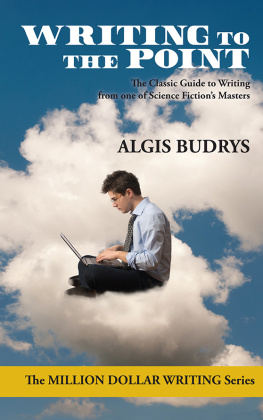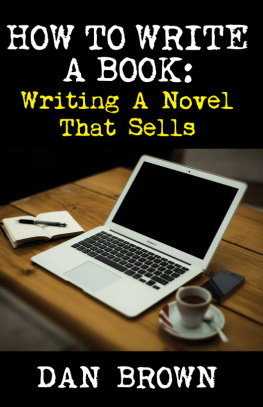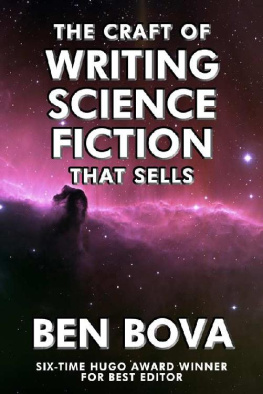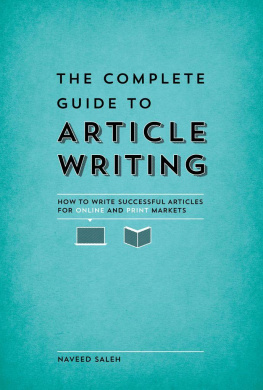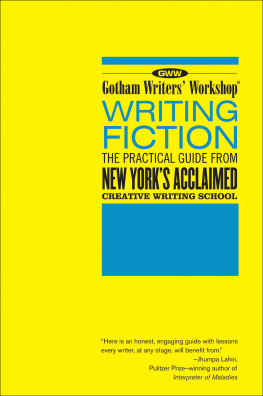When Writing to the Point arrived in the mail the other day, I gave the first page or two a casual glance out of curiosity and common politeness. So then an hour or two later the next thing I happened to notice was that Id just finished reading the whole thing.
Good stuff! Apart from being a good read its full of sound and useful advice, and I only wish you had thought to put a copy of it in a time machine and shipped it back a few decades. If I could have had it at the time when I was doing my own personal best to break in, with many false starts and little confidence in the outcome, it would have saved me immense grief and perplexity.
Frederik Pohl
Book Description
The classic work of writing instruction back in print!
The complete, concise guide to writing fiction that sells from one of the most popular instructors of the Writers of the Future and Clarion workshops. Get a masters competitive edge in the writing business.
Bestselling writer, editor, and renowned writing teacher Algis Budrys, known as AJ to his many students, has distilled his fifty years of success into Writing to the Point. Write better stories. Fix mistakes in your current stories.
Writing to the Point contains all the writing articles that appeared in the classic Tomorrow Magazine, re-edited and expanded. Algis Budrys has taught hundreds of people at scores of workshops, and was a well-known critic, editor, and author in his own right.
AJs information is, and always has been, solid gold. Every writer can learn from this book.
New York Times bestselling author
Kevin J. Anderson
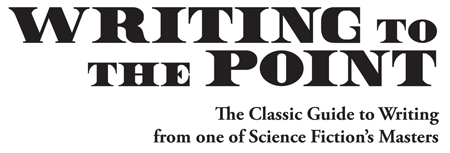

Digital Edition 2015
WordFire Press
wordfirepress.com
ISBN: 978-1-6475-368-1
Copyright 1988, 1989, 1992, 1993, 1994, 1999, 2015 Algis Budrys
Originally published by the Unifont Company in several editions
All rights reserved. No part of this book may be reproduced or transmitted in any form or by any electronic or mechanical means, including photocopying, recording or by any information storage and retrieval system, without the express written permission of the copyright holder, except where permitted by law.
The authors and publisher have strived to be as accurate and complete as possible in creating the Million Dollar Writing series. We dont believe in magical outcomes from our advice. We do believe in hard work and helping others. The advice in our Million Dollar Writing series is intended to offer new tools and approaches to writing. We make no guarantees about any individuals ability to get results or earn money with our ideas, information, tools or strategies. We do want to help by giving great content, direction and strategies to move writers forward faster. Nothing in this book is a promise or guarantee of future book sales or earnings. Any numbers referenced in this series are estimates or projections, and should not be considered exact, actual or as a promise of potential earnings. All numbers are for the purpose of illustration. The sole purpose of these materials is to educate and entertain. Any perceived slights to specific organizations or individuals are unintentional. The publisher and authors are not engaged in rendering legal, accounting, financial, or other professional services. If legal or expert assistance is required, the services of a competent professional should be sought.
Cover design by Janet McDonald
Art Director Kevin J. Anderson
Cover artwork images by Dollar Photo
Book Design by RuneWright, LLC
www.RuneWright.com
Kevin J. Anderson & Rebecca Moesta, Publishers
Published by
WordFire Press, an imprint of
WordFire, Inc.
PO Box 1840
Monument, CO 80132
Contents
Publishers Note
This book is a classic of writing advice, a pithy and insightful volume that covers an amazing amount of material in only a few pages. Algis Budrys was a master instructor and taught countless students, including me, many of whom have gone on to great success.
Because Writing to the Point was originally published in 1988, and revised several times in AJs lifetime, some of the specific business details may be somewhat out of date. With the permission of the Budrys estate, we have modernized some of the more obvious anachronisms. We believe the material itself is so valuable, however, we felt it important to make this book available again to writing students everywhere.
Enjoy and learn.
Kevin J. Anderson, publisher
WordFire Press
Introduction
The primary purpose of this book is to teach you everything you need to know in order to sell fictionscience fiction and fantasy in particular, but actually any kind of fiction.
If you pay proper attention to the precepts in this book, and do them, and only them, you will sell. Steadily.
As you sell, you will gain experience, and with experience comes the grace notes. You will go, then, as far artistically as your talent can take you. But you do not need more than a minimal amount of talent to begin selling fiction, and to continue to sell fiction.
A glance at a handful of bestsellers chosen at random will confirm the truth of this; there is no relationship between the degree of what most people call skill and the number of copies sold. Some are well-written, some are not. The thing they have in common is not good writing, it is the ability to create patterns in the plot. In other words, the important skill is not writing; it is writing.
What you will learn in these pages is the important skill; the Arthur Murray diagram of dance steps, from which you will learn enough to tour a dance floor with confidence. From it you may, if you so desire, progress further; step around the ballroom with uncommon style, give exhibitions, become an instructor. But none of those additional things will have much if any relationship to your actual earnings.
So you will find in this book no discussions of styleof voice, and tense, and case, for instance. These things are not basic. Writing professionally is not hard to describe. What is often very complex, and apparently difficult to describe at less than full book length, is a great deal of peripheral material which is often thought to have something to do with writing. I dont think it does.
I believe that if you do exactly what this book calls for, and do not do anything else, you will sell. If you are already selling, you will improve.
This will be harder than it sounds. You will inevitably try to add things you have learned from other books and instructors, and you may also feel that generally you know more than I teach. Perhaps you do, and perhaps the other books and instructors have valuable things to say. But what will happen is that you will confuse the instruction.
Writingand the only kind of writing we will be talking about is commercial, selling writingis, it turns out, simple. It took me twelve years of pretty steady effort, from the age of nine on, to learn a few things and unlearn many, until I began selling consistently at the age of twenty-one. During those twelve years, I picked up, from the many places aspiring writers pick things up, profound discussions of narrative versus dialogue, of viewpoint, and what have you. I also took careful notes as my college instructors taught innumerable lectures dissecting anthologized stories. It was, in short, a wonder I ever sold anything.

